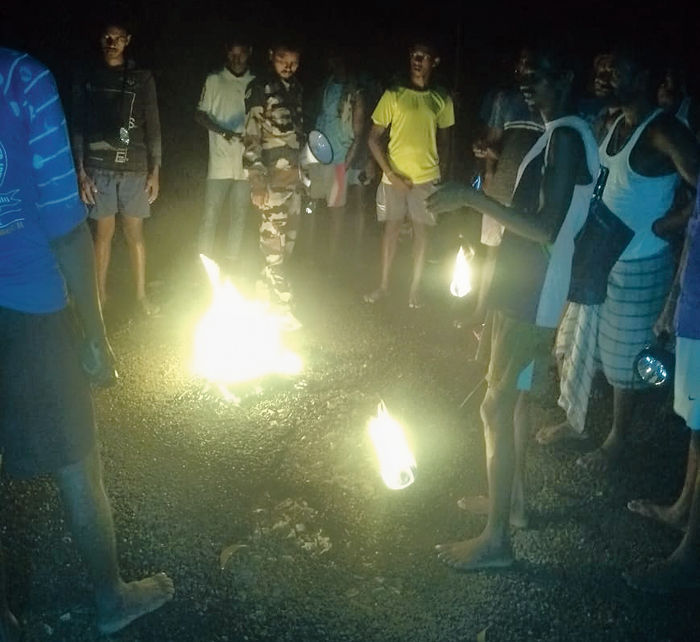A widened NH-33 and construction of irrigation canals in Ghatshila sub-division have disturbed elephant movement between animal bodes of Dalma in Jharkhand and the jungles of Midnapore in Bengal with dangerous repercussions on human habitations.
With elephant corridors disturbed, herds of tuskers continue to wander around the villages of Chakulia, Baharagora and Ghatshila blocks bordering Bengal. The migrating herds, who find themselves in unfamiliar territory, are damaging crops and homes, and at times, attacking villagers.
Two villagers were trampled to death in the Ghatshila sub-division during the past fortnight, triggering fear among the local population.
Forest officials are desperately trying to drive away the elephant herds towards Bengal, but the tuskers are not leaving the forests that are close to human habitation. Even if some elephants do cross over to Bengal, they return to Ghatshila soon.
According to forest officials, the herd anchored at Chakulia had eight elephants while the one at Baharagora had 11 elephants.
“Many elephant herds tend to visit small patches of jungles in Chakulia and Baharagora, and during their stay there end up damaging crops and houses. At times they take human lives too,” Jamshedpur divisional forest officer (DFO) Abhishek Kumar told The Telegraph.
The DFO pointed out the changes in elephant movement started last year because elephant corridors were being fragmented as a result of development projects.
“Earlier, elephants from the Dalma sanctuary would move freely towards Bengal and Odisha. But after NH-33 was widened to a four-lane highway with a divider, movement of elephants was restricted considerably. Construction of canals under the Subernarekha multi-purpose project (SMP) also contributed to the disruption of natural elephant corridors,” he explained.
Kumar said the forest department had posted a quick response team (QRT) at Chakulia to drive away elephants from human habitations.
“We have also provided villagers torch-lights, crackers, drums and mashal (fire torches) for driving away animals. But even then, the elephants aren’t moving away from the Chakulia range,” the DFO said, adding that forest officials were monitoring the situation closely.
“We are trying to ensure that villagers are alerted early enough so that they stay prepared to tackle elephant herds,” Kumar said.
The villages that are worst-hit in the Ghatshila and Chakulia forest range are Galudih, Basadera, Kesharpur, Mirgitand, Manasmuria, Baramara, Rangamatia and Dhanghari.
Kamal Mahto, a resident of Manasmuria village in Chakulia, said they had to remain watchful through the night.
“A herd of wild elephants tends to enter our village for food regularly. When the elephants come, we all gather at one place and burst crackers. We also light fire torches to drive them away. This has been going on for the last fortnight,” he said.










